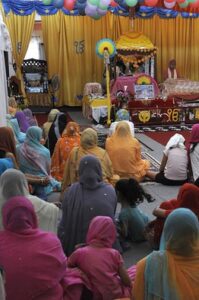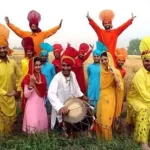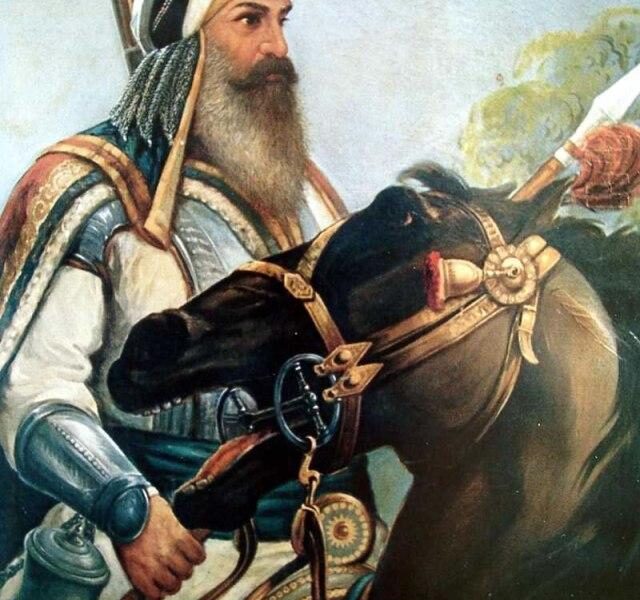Kesh, or uncut hair, is considered an essential part of Sikhism. In Sikhism, Kesh (sometimes Kes) is a practice of allowing human hair to grow naturally as a symbol of respect for the perfection of God’s creation. The practice is one of five Ks, the external symbols commanded by Guru Gobind Singh in 1699 as a way of calling the Sikh faith. The hair is cut twice daily with Kanga, one of the Five Ks, and tied in a simple knot known as the Jeera or Rishi knot. This hair knot is usually held in place by Kanga and covered with a turban.
I will not give “authorization” on any of the points or dispute any opinion. The individual contact in his kesh is personal and not my judgment. I will not criticize any of the reasons, as I am not in a position to find the truth of each claim, but rather present myself to you so that you can judge for yourself.

However, no one ever gave me a satisfactory answer as to why it was important or why the Guru ordered Sikhs to keep their hair long. Throughout my life, I have been plagued by unanswered, unanswered answers. So I decided to go ahead with my search, including any solid answers I could find.
Below is a summary of the various reasons I can find that people give why Sikhs keep hair short, or long. Through this research, my reasons for storing kesh have become clearer and stronger. Different reasons are heard by different people. Hopefully, this might help you find your reasons. I hope you enjoy this catalog and find the reason it works for you.
FAITH
Reason 1: Instructions for holiness or holiness
Another theory is that keeping the kesh in honor of Vaisakhi Hukam by Guru Gobind of 1699 (command/order) representing the amritdhari Sikhs, wears 5Ks, one of which is kesh.
In June 1699, after the first Sikh Vaisakhi, Guru Gobind Singh Ji issued the kukam and Sangat of Kabul directly according to the Bikrami calendar, Jeth 26, Sammat 1756. In this hukham, Guru Ji refers to kesh several times, “Keep your hair (kesh) uncut – this is a sign of Guru N . Take care of your hair and comb (twice) a day… .Never have any contact with those… who celebrate children’s haircuts,” (Guru Gobind Singh, 1699).

Others point to a rehatnama (code of conduct) written by Bhai Daya Singh Ji, a contemporary of Guru Gobind Singh Ji, saying, “Hair stays in the body, so keep it” (Singh, Nihang.).
Damdami Taksal Rehat Maryada also highlights the value of kesh, “Remove cut hair from your head down to your toes. All hair should be kept uncut and your hair should be tied and attached to a hat, “(Damdami Taksal).
Almost all other rehatnamas place special emphasis
In ancient India, it was the common practice among Hindu scholars and ascetics to keep long hair tied around their heads and to keep long beards. Gurdev Singh estimates in his paper, Perspectives on the Sikh Tradition, that Guru Gobind Singh wanted his Sikhs, despite being homeowners, to be karma yogis or active saints. Kesh was a way to illustrate this balance.
In India, kesh is a symbol of holiness, (Mansukhani, Gobind Singh).
Long hair serves as a reminder to Sikhs to behave like saints and ancient Rishi, (Sidhu, GS).
- A. Gaskell writes, “Hair is a symbol of faith, of true feeling, or the highest quality of the mind.”
Reason 2: Shared Awareness
GS Sidhu in his paper, A Brief Introduction to Sikhism, writes that long hair throughout the panth creates a conscious awareness among Sikhs; it is a symbol of dedication and understanding of the team.

Sikh collective consciousness is a collection of shared beliefs, values, history, ideas, and moral attitudes that serve as a unifying force within a panth. It plays a role in uniting Sikhs to achieve community goals and overcome obstacles. “The common denominator of common beliefs and feelings among ordinary members of the community constitutes a definite one-life system. It can be called collective or creative consciousness, “(Durkheim, Emile).
The content of the individual Sikh consciousness is shared equally with all other Sikhs within the panth, creating unity in the same similarities. Such integration facilitates the development of Sikh interests, objectives, and standards within the path and, beyond.
Moreover, in the view of Mary Kelsey (lecturer in social sciences at UC Berkeley), collective awareness brings Sikhs together as a powerful team to share resources and knowledge.
Finally, integrated knowledge in the Sikh context can provide the Sikh Panth with a unique agency: it provides each Sikh with thinking and acting in a way that reflects panthic values. This often promotes good conduct and prevents bad conduct. For example, many Sikhs are very conservative (bearded, long hair or hat) and thus may think twice about stealing as it portrays all other Sikhs and “gives them a bad name.” As Burns and Egdahl point out, those with collective experience “can be regarded as having the potential to grow: think, judge, decide, act, transform; self-esteem and others and your actions and interactions; and reasoning. ”
PHYSICAL HEALTH
Reduce Sexual Dimorphism

When the Singh adopts the common “feminine” feature of long hair, the gender divide between the Kaurs and the Singh diminishes. (Gender dimorphism is the presence of a clear physical difference between a man and a woman.) It has been scientifically noted that when gender dimorphism declines in type, there is an increase in social equality. My personal belief is that sharing the body (long hair) between the Kaurs and the Singhs can promote greater social equality and heterosexuality.








